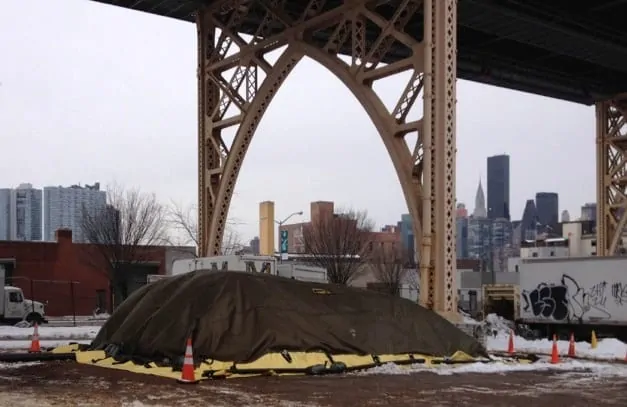

With support from the Town of Stonington, the Southeastern Connecticut Regional Resources Recovery Authority (SCRRRA) began a four-month food waste composting demonstration project at the Stonington Town Transfer Station on June 30, 2021. The environmental consulting and contracting firm SCS Engineers is supporting the project.
SCRRRA currently manages approximately 135,000 tons of garbage for its 12 member municipalities (East Lyme, Griswold, Groton, Ledyard, Montville, Preston, New London, Norwich, North Stonington, Sprague, Stonington, and Waterford). About one-quarter of the volume of garbage, or 33,750 tons, is organic waste.
The development of an organics facility could convert organic waste into a valuable organic soil amendment. The demonstration project is an integral part of a larger study that SCRRRA has undertaken to determine the feasibility of developing a commercial-scale food waste composting facility in Southeastern Connecticut.
Pilot projects such as this allow the region to quickly gather information about the collection and sources of organic materials, then test and refine a high-quality compost mix. The project also provides hands-on experience and can help spark innovative waste management practices.
Compost is produced using a mix of feedstocks, raw organic materials, such as leaves, wood, and food scraps. The composting process in the SCRRRA demonstration project uses wood mulch produced by SCRRRA at the Stonington Transfer Station and food waste supplied by two Connecticut companies Blue Earth Composting of Hartford and Willimantic Waste of Willimantic.
Communities across the U.S. report success diverting organic waste from landfills and producing a viable commodity with significant benefits, as the U.S. Composting Council describes in its Factsheet. For more information and outcomes from the SCRRRA project, contact SCRRRA Executive Director David Aldridge.
Most of us are familiar with small-scale backyard composting and with large-scale yard waste composting on bigger sites, typically outside of urban areas, using open windrows. But did you know there’s a lot of room between those scenarios to compost small to medium amounts of organics on limited land and/or in a more urban environment?
The NYC Compost Project Hosted by Big Reuse is one example. This urban food scrap compost facility, funded by the New York City Department of Sanitation, is tucked under the Queensboro Bridge. It uses a covered aerated static pile (ASP) system with the GORE® Cover System technology. The cover controls odors and vectors, and the aeration system and semipermeable membrane cover provide the needed air flow to support composting. The current system processes 400-500 tons of food waste annually, with plans to double that capacity on a new 1/3-acre site, designed by SCS (construction is scheduled for Summer 2017).

For a slightly larger site with a few acres available for compost facility layout, a hybrid approach may be the best bet to balance the needs for odor control, compost quality, and cost control. A hybrid approach may include an aerated static pile system as Phase 1 of the composting process, followed by open windrow processing as Phase 2. The aerated static pile provides a superior process and odor control during the critical initial weeks, while the windrows provide more cost-effective management through the completion of the composting process. A hybrid design proposed by SCS for a city in the Northeast can process about 4,000 tons of food waste plus 6,000 cubic yards of yard debris annually on a 2-acre site, with an estimated processing time of 4 to 5 months per batch.
In Wisconsin, compost facilities are regulated under NR 502; however, facilities processing less than 20,000 cubic yards of yard waste or less than 5,000 cubic yards of source-separated organics are exempt from many of the code requirements. Check out our compost reference Composting Exemption Reference List for details.
Suggested Contacts
Contact the author, Sherren Clark, PE, PG, for programs in the Upper-Midwest, or Greg McCarron, PE, about programs in the Northeast.
Contact to speak with a professional in your state about getting started.
Suggested Resources
U.S. Composting Council website
SCS Engineers Organics Management and Composting site
State agencies such as the Department of Natural Resources, Pollution Control, or Environmental Protection are usually excellent sources of information.